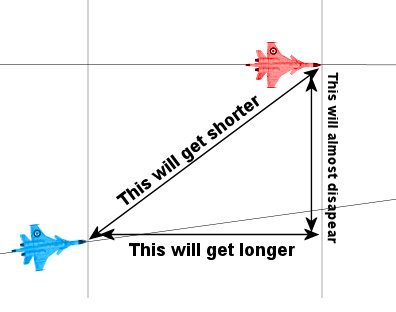Darth Revan
Prowler
- Joined
- May 10, 2016
- Posts
- 1,151
- Location
- Canada
- Society
- Love Craft Academy
- Avatar Name
- Darth Reven Reborn
While that seems to be correct what isn't so clear, or discussed or proven are a few discrepancies for example if the angle of intercept is small is it possible to get in range to shoot down an enemy? The distance gained would be too small or the intercept angle would tend towards infinity therefore making it unrealistic to shoot down an enemy.
When both ships are leaving a space station it's very likely that the intercept angle for the pirate ship would be too small to allow him to catch up and kill its target.
I.e. It all depends on the intercept angle and initial gap between the two ships if distance gap is large and intercept angle very low it doesn't seem to me to be feasible to be able to catch up.
I would like to know as well how long it would take someone to catch up?
Are we talking a few seconds or are they going to be chasing you half the way to ark to take you down?
From what Ive seen when i've been shot down (don't carry loot with me so i just thank for the skills) is that the attacker catches up extremely quickly from not being in view and once shot down is on me in less than 1 second to kill my avatar.
Again pointing out that I don't care about being shot down, just curious as to the maths behind the time...we seem to have covered distance.





